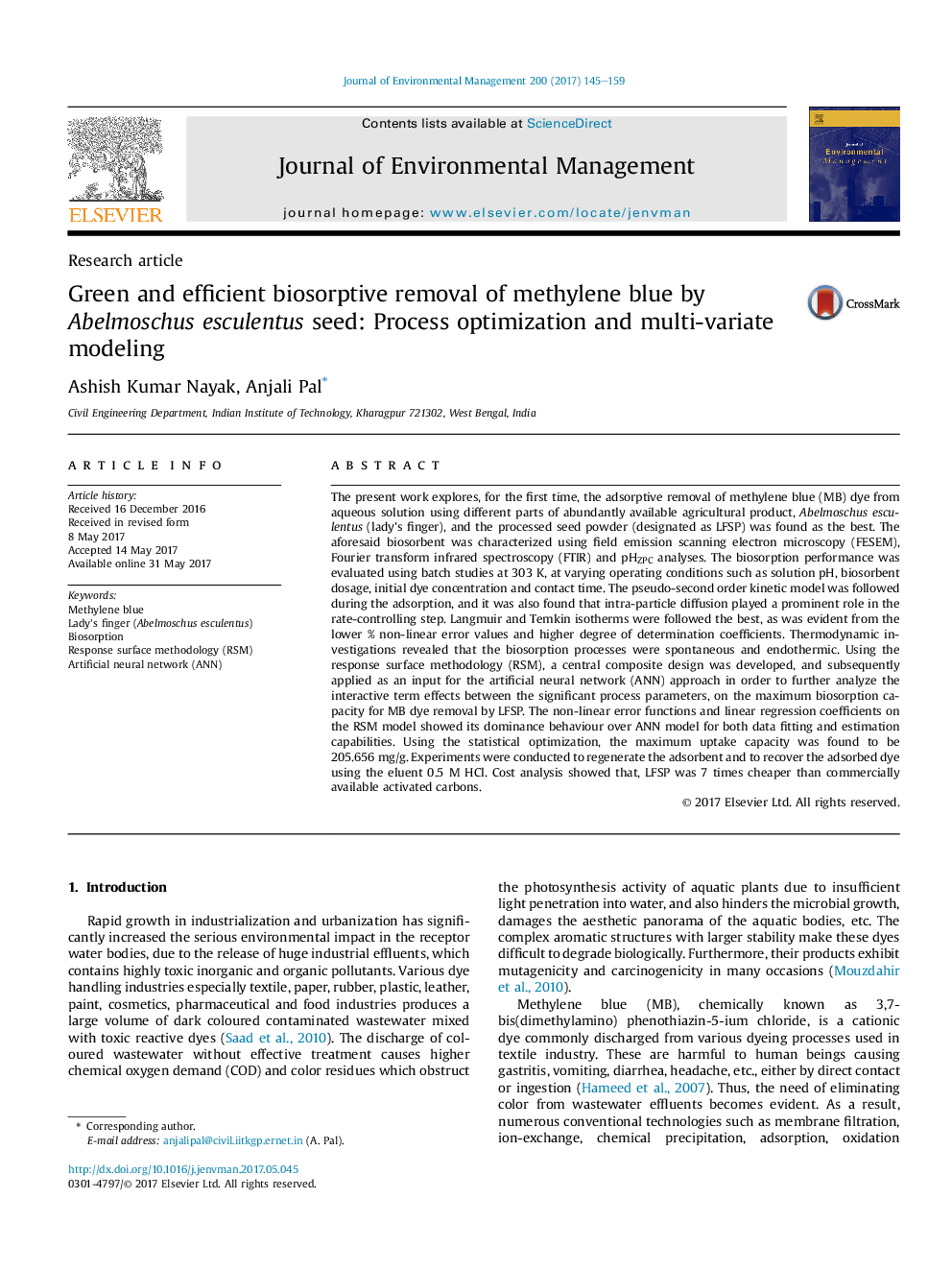| Article ID | Journal | Published Year | Pages | File Type |
|---|---|---|---|---|
| 5116326 | Journal of Environmental Management | 2017 | 15 Pages |
â¢Lady's finger seed powder (LFSP) as a novel biosorbent efficiently removed methylene blue (MB).â¢The MB biosorption was well fitted to the Langmuir and Temkin isotherm models.â¢The biosorption of MB followed the pseudo-second order kinetic model.â¢Higher temperature favoured the MB biosorption.â¢RSM methodology illustrated a very obvious advantage over ANN approach.
The present work explores, for the first time, the adsorptive removal of methylene blue (MB) dye from aqueous solution using different parts of abundantly available agricultural product, Abelmoschus esculentus (lady's finger), and the processed seed powder (designated as LFSP) was found as the best. The aforesaid biosorbent was characterized using field emission scanning electron microscopy (FESEM), Fourier transform infrared spectroscopy (FTIR) and pHZPC analyses. The biosorption performance was evaluated using batch studies at 303Â K, at varying operating conditions such as solution pH, biosorbent dosage, initial dye concentration and contact time. The pseudo-second order kinetic model was followed during the adsorption, and it was also found that intra-particle diffusion played a prominent role in the rate-controlling step. Langmuir and Temkin isotherms were followed the best, as was evident from the lower % non-linear error values and higher degree of determination coefficients. Thermodynamic investigations revealed that the biosorption processes were spontaneous and endothermic. Using the response surface methodology (RSM), a central composite design was developed, and subsequently applied as an input for the artificial neural network (ANN) approach in order to further analyze the interactive term effects between the significant process parameters, on the maximum biosorption capacity for MB dye removal by LFSP. The non-linear error functions and linear regression coefficients on the RSM model showed its dominance behaviour over ANN model for both data fitting and estimation capabilities. Using the statistical optimization, the maximum uptake capacity was found to be 205.656Â mg/g. Experiments were conducted to regenerate the adsorbent and to recover the adsorbed dye using the eluent 0.5Â M HCl. Cost analysis showed that, LFSP was 7 times cheaper than commercially available activated carbons.
Graphical abstractDownload high-res image (249KB)Download full-size image
